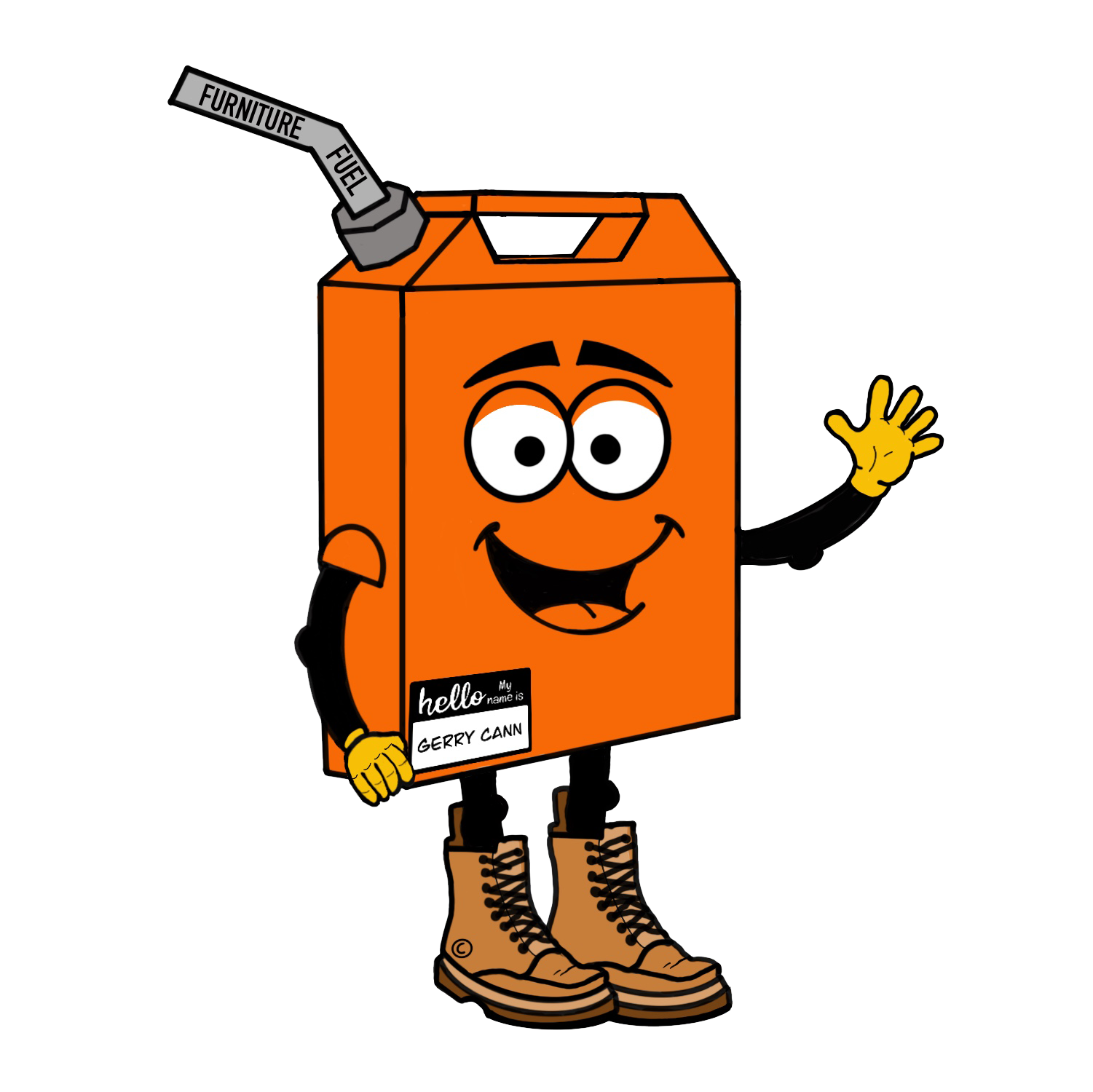How Many Touchpoints Does It Take to Make a Sale?
Jack Young
- Last Updated: 25 February 2025
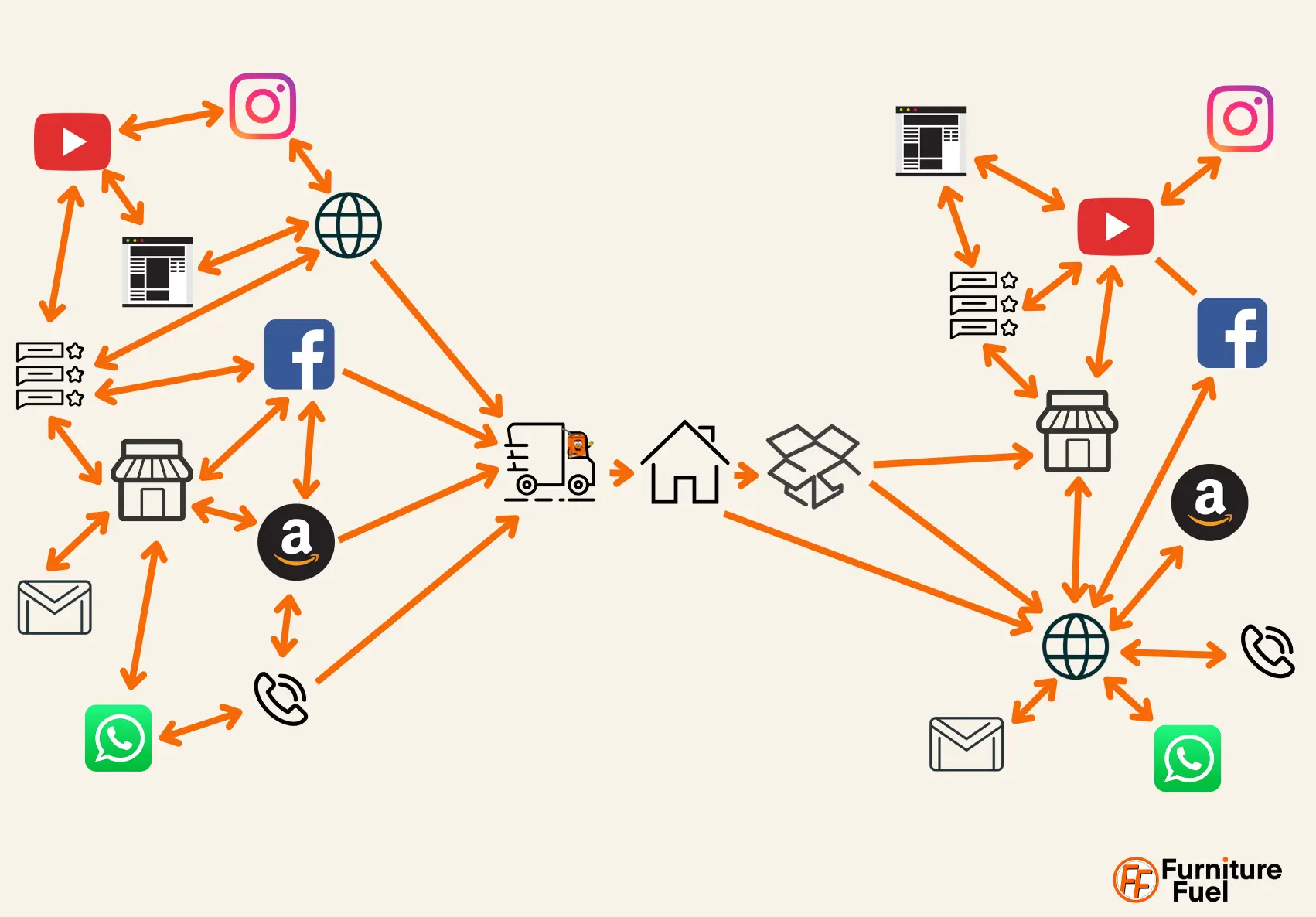
Table of Contents
Key Takeaways – How Many Touchpoints?
- Rule of 7 is Dated: The traditional “Rule of 7” suggests customers need to encounter, on average, a brand seven times before buying. However, in today’s fragmented digital world, the number of touchpoints varies depending on the product, the customer journey, and personal factors.
- Customer Journey is Non-Linear: Customers now interact across multiple platforms and devices, making their journey harder to predict.
- Product Type & Involvement Matter: Low-cost items may require fewer touchpoints (1–3), while high-ticket items often demand more (5–12+). The more significant the purchase, the more touchpoints are needed for reassurance.
- Focus on Impactful Moments: Rather than fixating on a specific number of touchpoints, businesses should focus on critical moments of truth—interactions that significantly influence a customer’s decision to buy.
- Maximisers vs. Satisficers: Some customers, known as maximisers, require more touchpoints due to their tendency to over-analyse and compare options, especially for high-involvement purchases. In contrast, satisficers are quicker to decide once they find a product that meets their standards.
- Persona-Based Strategy: Understanding customer personas before mapping the journey ensures that businesses focus on the most valuable segments and can optimise touchpoints for those customers.
- Refine Calls to Action (CTAs): CTAs should reflect the customer’s stage in their journey. For early-stage customers, offering secondary actions (e.g., newsletter sign-up or further information) is more effective than pushing for a sale too soon.
TLDR - Core Summary: How Many Touchpoints to Make a Sale
As customer journeys have become more complex and fragmented, the Rule of 7 should be used as a reminder of repeated brand exposure, not as a hard and fast rule. The number of touchpoints needed before a purchase depends on product type, customer behaviour, and the buying journey. Instead of focusing on a set number of touchpoints, businesses should target critical “moments of truth” that influence decisions. Understanding whether your customers are maximisers or satisficers can also help tailor the buying experience. Most importantly, customer personas and thoughtful CTAs should guide your strategy to align with where customers are in their decision-making process.
Touchpoints Are a Key Consideration
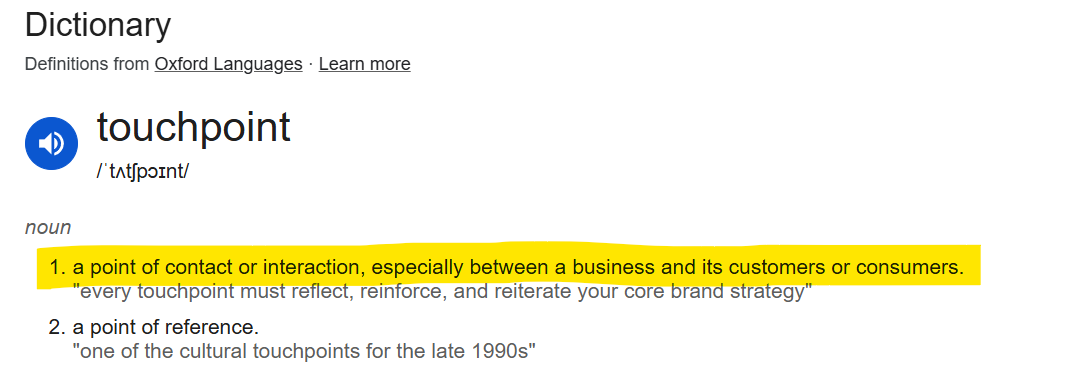
Image: Screenshot of Google Search Results for Touchpoints
The number of touchpoints a customer needs before making a purchase is a key factor in shaping any sales strategy. But what if the widely cited ‘Rule of 7’ no longer applies in the digital age? Let’s explore why the number of touchpoints can vary based on factors like product type, customer journey, and personal behaviour and how businesses can better understand these dynamics to enhance their sales strategy.
The “Rule of 7” suggests that potential customers must encounter your brand at least seven times before making a purchase. However, today, this number is often much higher. Shorter attention spans, fragmented journeys across multiple platforms, and the complexity of big-ticket purchases like furniture all contribute to an increase in touchpoints. Each interaction presents both an opportunity and a risk—helping guide the customer toward a decision or losing their interest altogether.
But where did the Rule of 7 come from?
The Rule of 7 in Marketing
The Rule is often linked to George Miller’s 1956 research on short-term memory capacity (7±2 chunks) and Hollywood, of all places. In the 1930s movie industry, studio executives believed that audiences needed multiple exposures to advertising before deciding whether to see a film. They determined that it had to be seen at least seven times.
In marketing, the rule of 7 is not solely based on Miller’s work or the Hollywood theory and is not grounded in rigorous scientific research. Instead, it’s a marketing principle that has evolved over time, with various influences and interpretations. Today, it should be seen as a general guideline emphasising the importance of repeated brand exposure rather than a strict scientific rule.
Mere Exposure Effect & the Rule of 7
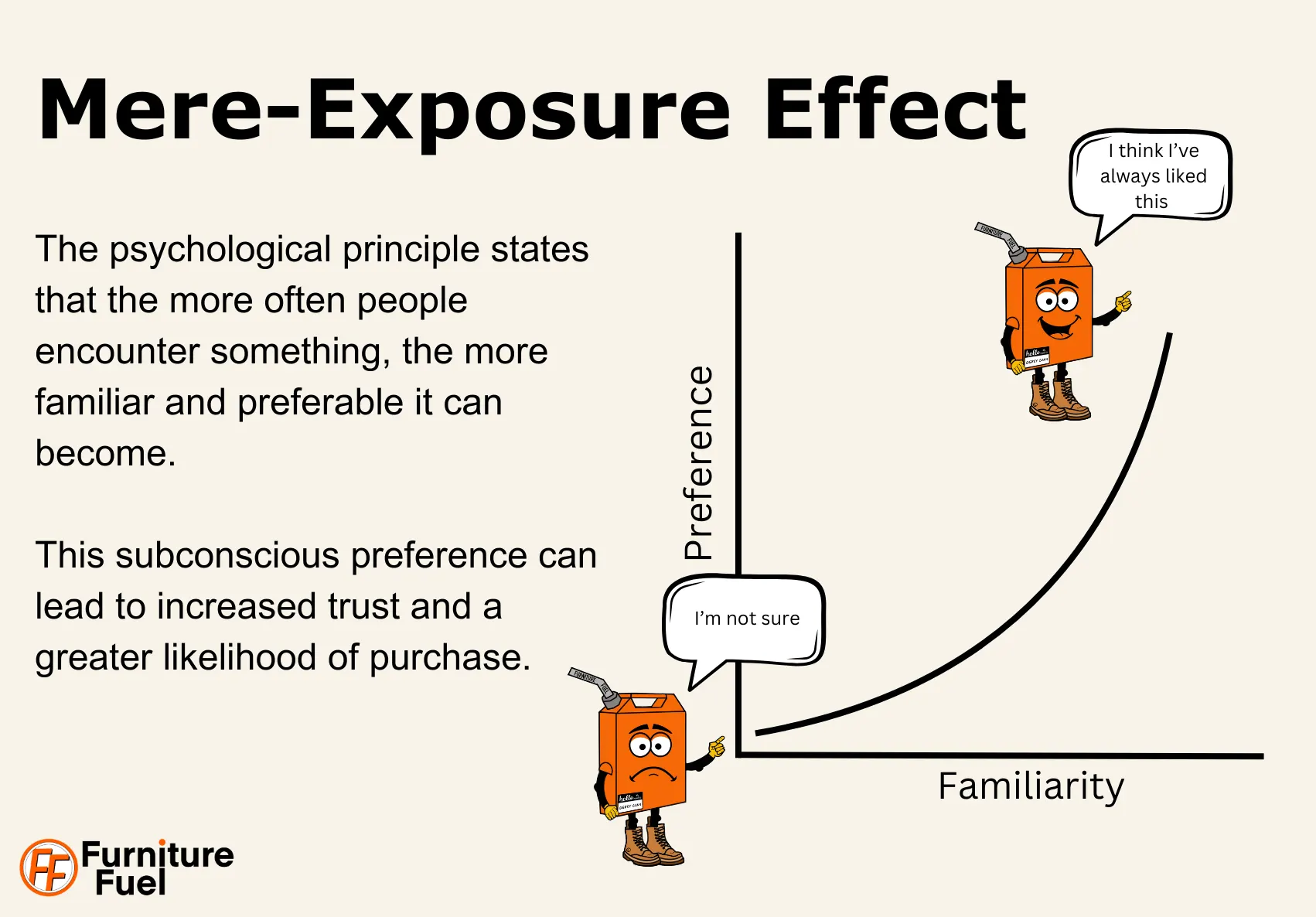
The rule is closely related to the mere exposure effect, which may give it its power. The psychological principle states that the more often people encounter something, the more familiar and preferable it can become. This subconscious preference can lead to increased trust and a greater likelihood of purchase—even if the consumer isn’t actively aware of the repetition.
Repetition also plays a crucial role in memory encoding. The more frequently a message is seen, the more likely it is to be stored in long-term memory, reinforcing brand recognition. However, repetition alone isn’t enough—the quality, context, and relevance of each exposure influence whether it strengthens the brand’s impact or becomes background noise.
To further leverage the mere exposure effect, user-generated content (UGC)—such as images of furniture in customers’ homes—can amplify its impact through social proof. When consumers repeatedly see real customers engaging with a brand through reviews, testimonials, or photos, it reinforces trust and desirability. This combination not only increases familiarity but also triggers the bandwagon effect, making people more likely to follow the behaviour of others.
Strategically presenting your brand message across multiple integrated channels to provide a seamless customer experience is known as omnichannel marketing. This approach differs from multichannel and optichannel marketing, which are distinct strategies. Multichannel marketing focuses on using multiple platforms to reach customers, often without full integration, while optichannel marketing prioritises selecting the optimal channel for each customer interaction based on data-driven insights.
Omnichannel marketing emphasises a unified, consistent brand experience across all online and offline touchpoints, putting the customer at the centre of the strategy.
How Many Touchpoints Does the Customer Need to Buy?
Defining an exact number of touchpoints before a purchase is challenging in today’s digital world. The Rule of 7 serves more as a guiding principle than a strict formula, as it doesn’t fully account for the complexity of modern customer journeys.
The Customer Journey is Non-Linear
With the rise of digital channels, social media, mobile apps, search engines, and e-commerce platforms, the customer journey is now fragmented. Customers often jump between platforms, interact with different types of content, and even revisit the same touchpoints multiple times before deciding whether to purchase a product or not.
For instance, a customer might see a Facebook ad for a sofa, click on the website, and then leave. Later, they might see an Instagram post and return to the website. They might visit a store or call customer service for reassurance.
This non-linear flow makes it hard to define a fixed number of touchpoints, as customers can choose different purchasing paths.

The customer journey is like a pinball machine. As a business owner, you can create opportunities to guide customers through different touchpoints, like ads, emails, or product pages, much like how paddles help guide the ball. But just like the ball, customers can take unexpected—unintended actions. While we can influence their path, the journey is ultimately theirs to navigate.
The Influence of Environmental and Personal Factors
Product type, price point, and brand familiarity all influence the number of touchpoints a customer needs. A low-cost, low-risk purchase might only require 2–3 touchpoints, whereas a high-ticket item could require many more.
Also, personal factors, such as whether the customer is a first-time buyer, loyal customer, or influencer in their social circles, can drastically alter their journey.
- Low-Involvement Products (e.g., throw pillows, lamps): Often require 1–3 touchpoints, especially when the purchase is affordable or impulsive.
- High-Involvement Products (e.g., sofas, beds): Could need 5–12+ touchpoints, as customers invest time researching, comparing, and seeking reassurance.
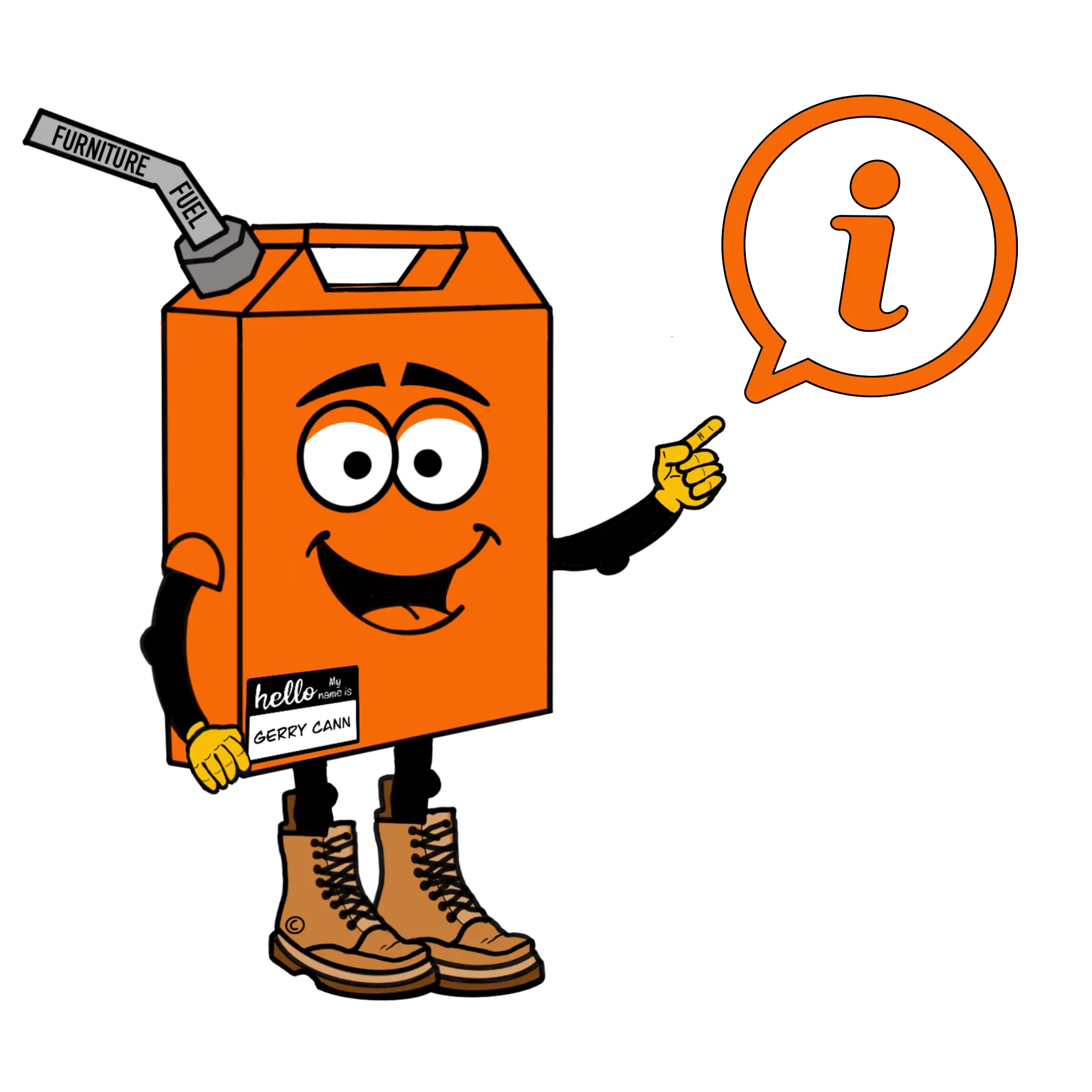
An influencer in their social circles isn’t necessarily a social media personality. Instead, this refers to individuals whose opinions hold weight among friends, family, or colleagues. For example, someone known for having great taste in home décor or being the go-to person for furniture advice can influence others’ purchasing decisions. Because their recommendations matter, they are more likely to research thoroughly to avoid making a wrong purchase in their eyes
Attribution Complexity
Attribution in marketing refers to identifying which touchpoints contributed to a sale. Accurately identifying attribution has become increasingly difficult as customers switch between devices, platforms, and channels throughout their journey. Without proper tracking, businesses may struggle to measure the impact of each interaction and optimise their sales strategies.
For example, a customer might discover your brand through social media, research on mobile, and later purchase via desktop. Without practical attribution tools, it’s hard to determine which touchpoints influenced the final decision, making it even more challenging to define how many interactions are genuinely needed.
The Evolution of the "Touchpoint"
What qualifies as a touchpoint has expanded far beyond traditional channels. Today, interactions include reviews, word-of-mouth, social media mentions, influencer content, AR tools, emails, and packaging. Today’s touchpoints are more informational than transactional—customers use them to research, compare, and validate before purchasing. Recognising this shift is crucial, as brands must provide valuable, trust-building content throughout the journey instead of concentrating only on direct sales near the bottom of the funnel.
Can Another Supplier’s Website Be a Touchpoint?
Another supplier’s website can be a touchpoint in the customer journey, particularly during comparison shopping. Customers often visit competitors to evaluate price, features/benefits, reviews, or additional services, which shapes their expectations and influences their decision to buy from you. For example, if a competitor highlights free delivery or unique product features, it can raise the bar for what customers expect from your offering.
To turn competitor touchpoints to your advantage, it’s essential to differentiate clearly. Your website should highlight unique selling points like superior reviews, warranties, or added value, making it clear why your company or brand is the better choice.
It’s worth proactively identifying if competitors’ websites are part of your customers’ journeys. Post-purchase surveys can reveal whether they visited other suppliers and what ultimately convinced them to choose you.
Understanding how competitor websites act as touchpoints allows you to refine your strategy to keep customers engaged, build trust, and ensure your brand stands out.
Focus on Impactful Moments, not a Set Number of Touchpoints
Moments of truth are key decision-making points in the customer journey that can significantly impact their perception of a brand. These moments often determine whether a customer moves forward or abandons the purchase.
However, not all touchpoints are moments of truth—some interactions may simply reinforce familiarity without dramatically shaping the customer’s perception. At the same time, every moment of truth is a touchpoint, carrying more weight than standard touchpoints because it directly influences trust, satisfaction, and purchasing decisions.
Positive moments of truth create confidence and momentum—seeing glowing reviews or using an AR tool to visualise a sofa in their living room can reinforce the decision to buy. Negative moments of truth introduce doubt and hesitation, such as discovering a critical review about poor customer service or encountering hidden delivery fees at checkout, which can quickly derail the process.
Rather than fixating on a specific number of touchpoints, the focus should be on identifying the most impactful moments of truth—those key interactions where the customer either moves forward with confidence or hesitates. While the traditional “7 touchpoints” theory isn’t inherently wrong, it oversimplifies the complexity of modern consumer behaviour. The real focus should be on the quality of interactions rather than a fixed quantity—how well each touchpoint builds trust, addresses concerns, and moves the customer closer to a decision.
One way to identify these moments of truth is through Net Promoter Score (NPS) surveys. By asking customers directly about their experience—what influenced their decision and whether they would recommend your brand—you can pinpoint which touchpoints had the greatest positive and negative impact. This allows for more strategic refinement of the customer journey, ensuring that key interactions build trust and drive conversions.
Beyond identifying what influenced a purchase, it’s just as important to understand what almost prevented it. A powerful question we have discussed before is: “What nearly stopped you buying from us?” This approach, highlighted in Making Websites Win by Dr Karl Blanks and Ben Jesson (pg. 102), helps uncover friction points in the customer journey. The answers can reveal specific touchpoints that need strengthening—whether it’s unclear pricing, lack of trust signals, or unexpected costs.
In their book Private Label Strategy: How to Meet the Store Brand Challenge, Nirmalya Kumar and Jan-Benedict E.M. Steenkamp discuss how Procter & Gamble identified their key moments of truth (pg180): “P&G has devoted considerable thought to moving from selling products to selling experiences by elaborating on the concept of “moments of truth”. P&G believes that there are two moments of truth that have to be won. First, at the retail shelf, the consumer has to be persuaded to choose P&G products. Second, at home, the consumer has to be delighted by the consumption experience in order to trigger repurchases. P&G has changed its structure to be leaner and more responsive to these two moments of truth.”
Touchpoints: Social Media and the Rise of Maximisers
The way consumers approach purchasing decisions—whether they are maximisers or satisficers—affects how many touchpoints they need before feeling confident enough to buy.
Barry Schwartz, in The Paradox of Choice, describes two types of buyers:
- Maximisers: Seek the best possible outcome by exploring every option and weighing all possibilities. The abundance of choices often leads to decision fatigue or dissatisfaction.
- Satisficers: Settles for “good enough” once they find a product or decision that meets their requirements, leading to quicker and more satisfying choices.

Social media has increasingly turned many consumers into maximisers, extending the number of touchpoints required to feel comfortable enough to make a purchase.
Platforms like Instagram, Pinterest, and TikTok present an endless stream of idealised lifestyles, constantly showcasing “perfect” products and experiences. This fuels a maximiser mindset—where consumers are always searching for the best deal, product, or experience, endlessly comparing their choices to what others are posting online.
FOMO and the Fear of Making the Wrong Choice
Social media has also amplified the fear of missing out (FOMO)—the worry that if you don’t pick the best option, you’re settling for less while others enjoy something better. This uncertainty drives maximisers to spend more time researching, scrolling through reviews, watching multiple unboxing videos, and consulting social media posts before deciding.
Beyond FOMO, there’s also the fear of social judgment. Every purchase can be scrutinised online, and the wrong choice can invite ridicule. People act as judge, jury, and executioner, making consumers second-guess their decisions. The pressure to find the perfect product—whether to avoid regret or criticism—keeps many shoppers stuck in an endless cycle of evaluation rather than moving forward with a purchase.
Understanding how maximisers and satisficers behave is vital for retailers, as it directly impacts how many touchpoints a customer requires before making a purchase.
Maximisers in Retail and Consumer Behaviour
This maximiser mindset can be seen in retail, particularly for purchases like furniture. With high-ticket, long-term investments like sofas, shoppers feel the weight of their decision even more, especially when facing pressures brought on by the cost-of-living crisis. Consumers extend their decision-making process, seeking extensive validation before committing. Their fear of making the wrong choice can lead to decision anxiety, as they over-analyse options, compare reviews, check multiple sources, and return to physical stores repeatedly. Even without social media’s influence, they exhaust all possible options to ensure they make the right choice.
What does this mean for your business? Catering to maximisers requires offering detailed product information, in-depth comparisons, and reassurance through customer reviews, guarantees, and flexible return policies. Streamlining the buying experience with well-structured content, personalised recommendations, and guided selling tools can help prevent decision fatigue while keeping them engaged. The goal is to make them feel confident in their choice without overwhelming them with endless options.
Satisficers, however, are more likely to be satisfied once they find a product that meets their needs, even if it’s not the “best.” They’ll spend less time deliberating, potentially valuing efficiency over perfection. The rise of subscription models or curated shopping experiences has capitalised on this behaviour by providing “good enough” solutions that simplify their decision-making process, requiring fewer touchpoints to make a decision.
For Maximisers:
- Provide abundant information: Offer in-depth reviews, comparison tools, AR visualisation, and comprehensive product specs to cater to the maximiser’s need for thorough research.
- Streamline the buying process: Implement features that allow consumers to easily compare their options. Clear filters, product comparison tables, and price guarantees can help them feel confident in their choice.
- Leverage Social Proof: Showcase testimonials, influencer reviews, and user-generated content to provide reassurance and reduce the feeling of FOMO.
For Satisficers:
- Curate choices: Offer streamlined, well-designed collections or curated selections to help satisficers make quick decisions.
- Focus on value: Clearly demonstrate why the product is good enough—whether it’s the price, quality, or a unique feature.
- Emphasise simplicity: A clean, easy-to-navigate website with clear calls to action can encourage satisficers to make decisions faster and more confidently.
Our weekly newsletter provides digestible content on business strategy, marketing tactics and behavioural economics designed to fuel your furniture business.
Why Relevant Calls to Action Should Guide the Next Touchpoint
Understanding the needs, behaviours, and decision-making styles of different customer segments through personas allows you to tailor CTAs that align with their specific journey. Rather than leaving them to navigate an overwhelming number of touchpoints across your business, competitors, and third-party sources, you can create a clear pathway that keeps them engaged.
When crafting content like how-to guides or articles, the goal is to build trust and provide value. A hard “Buy Now” call to action (CTA) at this stage can feel abrupt, potentially turning off readers who aren’t yet ready to purchase. Instead, CTAs should reflect where the customer is in their journey, guiding them to the next logical step.
The key to this strategy is creating a flow of touchpoints that align with the customer’s stage in the decision-making process. For those in the early stages, offering the option to learn more or subscribe to additional content works well. As they move into the consideration stage, you can introduce case studies or product comparisons to deepen their understanding of your brand and the product offerings. Finally, when they reach the decision stage, a more direct CTA, such as “Buy Now” or “Book a Consultation,” becomes relevant.
By structuring your CTAs this way, you help guide users through their decision-making process, ensuring they don’t feel overwhelmed by a hard sell too early while building trust and loyalty.
Track drop-off points, exit pages, and abandoned carts to pinpoint where customers disengage. Use feedback loops—surveys, heatmaps, and analytics—to fine-tune your approach. If decision paralysis is a barrier, simplify choices or enhance guided selling tools to keep the journey moving forward.
Why Personas Should Come Before Customer Journey Mapping
How can you map a journey if you don’t know who’s taking it? Not all customers interact with your business in the same way. Personas help you identify and prioritise key customer segments, ensuring your journey mapping efforts focus on those with the greatest impact. This allows you to allocate resources effectively, designing experiences that resonate with your most valuable customers.
Personas are a powerful tool for identifying your ideal customer, but it’s easy to forget that behind every persona is a real person with unique needs, emotions, and behaviours. Relying too heavily on static profiles can lead to assumptions that don’t always align with reality.
Use personas as a guiding framework, but always validate them with real customer interactions and feedback. Staying flexible ensures your strategies remain relevant and customer-centred.
At its core, business is H2H—Human to Human.
Optimising Touchpoints Across the Customer Journey

Three Key Questions to Ask When Mapping the Customer Journey
Mapping the customer journey is essential for understanding how your customers interact with your brand at each touchpoint. However, to truly optimise this journey and ensure a seamless experience, there are three fundamental questions every business should ask themselves:
- Does the journey feel seamless, or are there disconnects and silos?
Look for inconsistencies—such as mismatched messaging, missing product details, or unclear next steps. Disconnects can leave customers confused or unsupported, leading to frustration and lost opportunities. - How does each touchpoint contribute to—or hinder—the overall experience?
Every touchpoint shapes customer perception. Positive touchpoints, like timely emails and easy navigation, build trust, while negative ones—such as long wait times or confusing interfaces—cause frustration. - Do your internal processes shape the experience or genuinely reflect customer needs?
Internal goals, like cost reduction, drive many business processes, but these can sometimes clash with customer expectations. While automation and templated systems can streamline operations, they can feel impersonal if poorly executed.
By asking these questions you can evaluate the quality and structure of the customer journey. Helping to pinpoint bottlenecks, identify opportunities for improvement, and ensure a customer-centric, efficient experience.
How to Identify Touchpoints on the Customer Journey
Start by mapping all potential touchpoints across the customer journey, from awareness to post-purchase.
Awareness Stage: Social media ads, blog posts, referrals.
Consideration Stage: Product descriptions, reviews, comparison charts.
Evaluation Stage: AR tools, in-store visits, financing options.
Purchase Stage: Checkout process, delivery details, order confirmation emails, and payment options.
Post-Purchase Stage: Follow-up emails, unboxing experiences, and customer support.
Track customer behaviours and interactions using CRM systems, analytics tools, and marketing automation platforms to identify the touchpoints that drive the most conversions. You can use A/B testing to experiment with different formats and channels to determine what resonates best with your audience. Pay special attention to “moments of truth”—critical touchpoints that influence decision-making—such as high-quality visuals, customer reviews, and transparent pricing.
Customers are a great source of information. After a sale, ask customers what influenced their purchase or what made them almost not buy. Prioritise those that directly affect purchasing decisions, like compelling product imagery, strong social proof, and a seamless checkout experience. Finally, consistency across all channels is ensured to create an Omni and frictionless experience, whether online or offline.
Remember: The Rule of 7—like Barbosa said in Pirates of the Caribbean about parley, “more what you’d call ‘guidelines’ than actual rules”. The Rule of 7 is about consistency and omnichannel awareness, making sure your customers consistently encounter your message across different touchpoints.
While data and insights can improve your understanding of customer behaviour, it’s never an exact science. Real customers don’t always align with persona-based assumptions, so ongoing feedback and analysis are essential. Optimising touchpoints isn’t a one-off task either—it requires continuous monitoring, testing, and refinement. Keep track of what works, be patient as you adjust, and embrace feedback to keep evolving your customer journey. By staying persistent and adaptive, you’ll create an experience that keeps customers engaged and confident in their purchase decisions.
Related Articles
How to Use Net Promotor Score to Get Customer Feedback About Your Furniture Business
Choose How Your Furniture Business Will Compete – Low Cost, Differentiation or Focus
How to Build and Sustain Customer Loyalty in a Competitive Furniture Market
Brewing Success: Can a Cup of Coffee Really Increase Furniture Sales?

